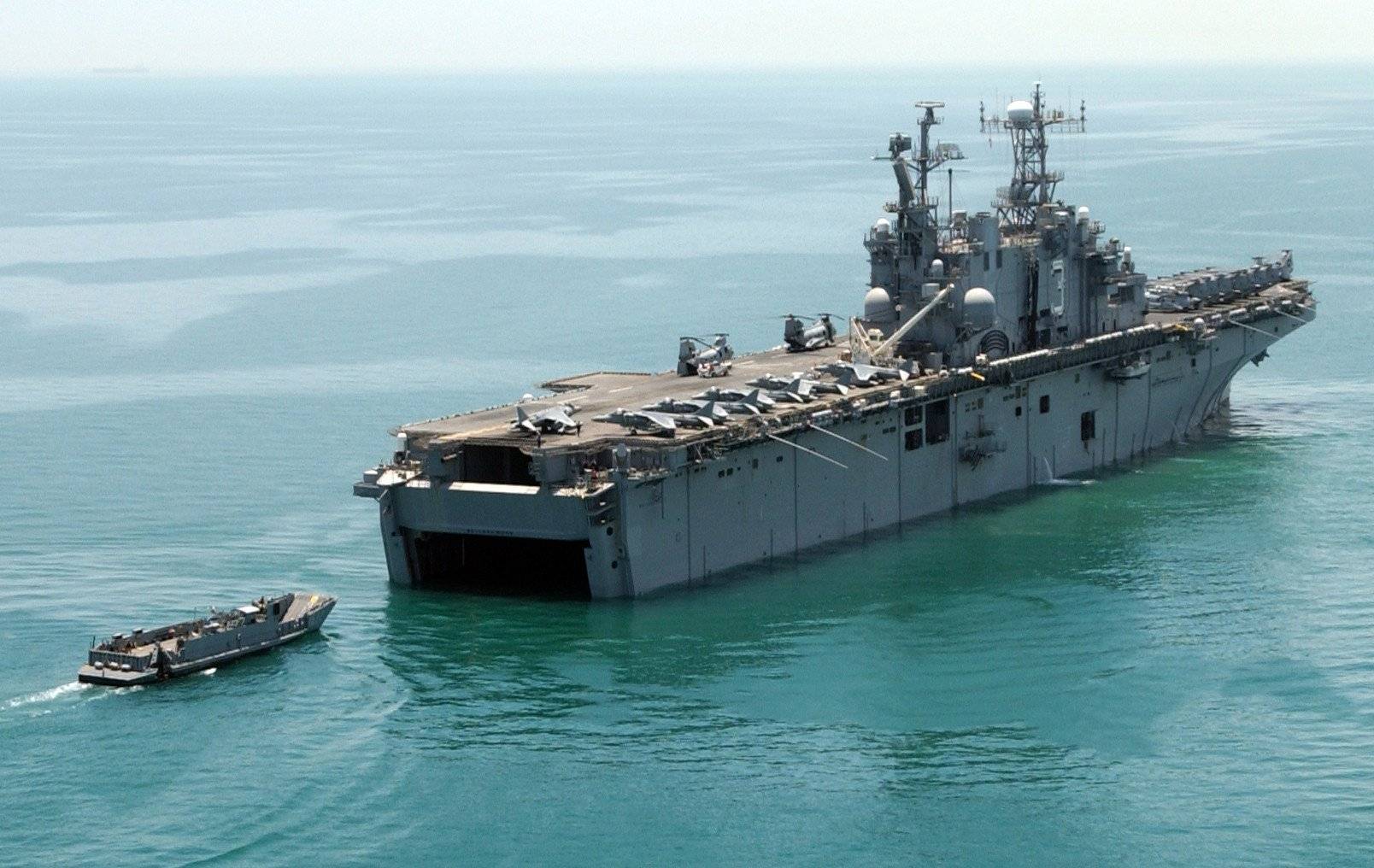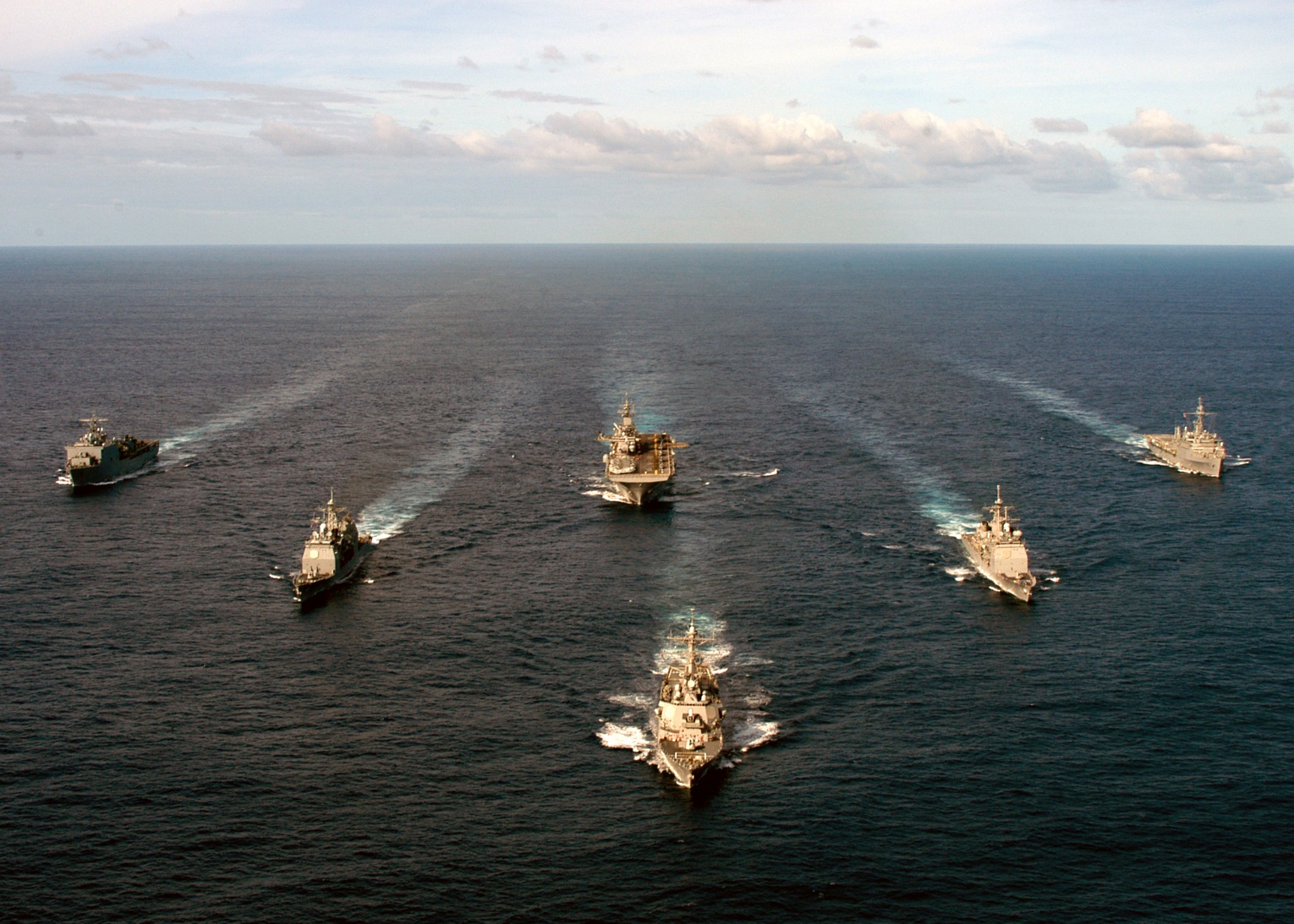USMC Deployment grouping

The US Navy has a very flexible system of providing credible power projection anywhere on the globe by using a combination of its Aircraft Carriers and Amphibious forces. The USMC provides a considerable part of this power projection in the form of its Marine Air/Ground Task Forces (MAGTF).
In the 1980’s the USMC transitioned from its more traditional ‘Amphibious’ force to the modern ‘Expeditionary’ force. A more comprehensive combined arms doctrine was needed and this resulted in the evolution of ‘Expeditionary’ elements which were more self sustained and cohesive than the previous ‘Amphibious’ elements. This evolution was linked to the development of pre-positioned equipment in key locations around the globe and a gradual change in organization.
A MAGTF is completely scalable from as small as a few hundred Marines to as large as a 32,000-man Marine Expeditionary Force (MEF). Whatever the size however, there are always four elements to a MAGTF:
Command Element (CE) to provide command, control, communications, intelligence and to coordinate joint effects in support of the mission.
Ground Combat Element (GCE) providing the combined arms effects needed for the mission.
Aviation Combat Element (ACE) which is task tailored to provide all air effects necessary for the accomplishment of the mission.
Logistics Combat Element (LCE) organized to provide all logistic functions to both the ground and aviation combat elements.
In 1994 there were three main sizes of MAGTF’s which roughly correspond to Army unit sizes; but are much more powerful and flexible due to the integration of the ACE.
Marine Expeditionary Unit (MEU): Based on a Battalion sized GCE with a combined arms complement of approximately 2,200 marines.
CE is small but able to coordinate the effects of all combat elements of the MEU. A MEU is commanded by a Colonel.
GCE is based on a Battalion with attached artillery, armor, combat engineer, both armored and light reconnaissance and amphibious vehicles. The GCE represents about half of the MEU’s personnel.
ACE is based on a composite squadron of transport helicopters, Attack helicopters and Harriers.
LCE provides all combat service support required to sustain the MEU for approximately 15 days.
Marine Expeditionary Brigade (MEB): Based on a Regimental size GCE with significant augmentation and a powerful ACE. A MEB will normally consist of about 14-15,000 Marines.
CE is capable of commanding and coordinating all joint effects available. A MEB is commanded by a Brigadier General and is augmented by a Communications Battalion, Intelligence Battalion, Military Police, Psychological Operations, Naval Gunfire and Reconnaissance elements.
GCE is based on a Marine Infantry Regiment with attached artillery, armor, combat engineer, both armored and light reconnaissance and amphibious vehicles. The GCE represents about 40% of the MEU’s personnel.
ACE is based on a Marine Air Group (MAG) with representation from every marine aircraft type including at least two F/A-18 Squadrons, 2-3 Harrier Squadrons, at least one Attack Helicopter Squadron, Medium and Heavy Transport Squadrons, air logistics, and air command and control facilities.
LCE is based on a Combat Logistics Regiment and provides all combat service support required to sustain the MEB for approximately 15-30 days.
Marine Expeditionary Force (MEF): Based on a Divisional size GCE reinforced as required, and a powerful ACE. A MEF will normally consist of about 32,000 or more Marines.
CE is capable of commanding and coordinating all joint effects available. A MEF is commanded by a Major General and has significant augmentation.
GCE is based on a Marine Division with all of its combat enablers.
ACE is based on a Marine Air Wing (Wing) consisting of significant numbers of combat and combat support squadrons, air logistics, and air command and control facilities.
LCE is based on a Combat Logistics Group and provides all combat service support required to sustain the MEB for approximately 15-30 days.
The USN is responsible for delivering these forces onto a hostile shore, thus it has designed and created the most capable amphibious ships in history. There are only two types of standing amphibious groups, which are designed to deliver an MEU, anything more than that requires a task tailored organization designed for the operation.
Amphibious Ready Group (ARG) consists of enough amphibious capacity to move and deliver a complete MEU. The standard composition of an ARG is one LHD or LHA, one LPD, one LSD and one or possibly two LSTs
Expeditionary Strike Group (ESG) consist of an ARG plus an escort of one or two CG/CGN, one or two DD or FFG and possibly an SSN.
There are generally two or perhaps three MEUs afloat at any time. An MEU from 2nd MEF (Atlantic Coast) is normally positioned in the Mediterranean or perhaps the North Sea. An MEU from 1st MEF (Pacific Coast) is routinely on patrol in the Western Pacific or Indian Oceans. 3rd MEF has a standing MEU positioned in Japan, this MEU can be at sea or ashore depending on the state of readiness or situation. Each of the MEFs could have a second MEU afloat while rotating their force in or out of a potential conflict area.
In Northern Fury there are two ESGs at sea:
USS Peleliu ESG with 13th MEU embarked in the Indian Ocean
USS Kersarge ESG with 22nd MEU embarked in the eastern Mediterranean

USS Peleiliu ARG

Expeditionary Strike Group (ESG)